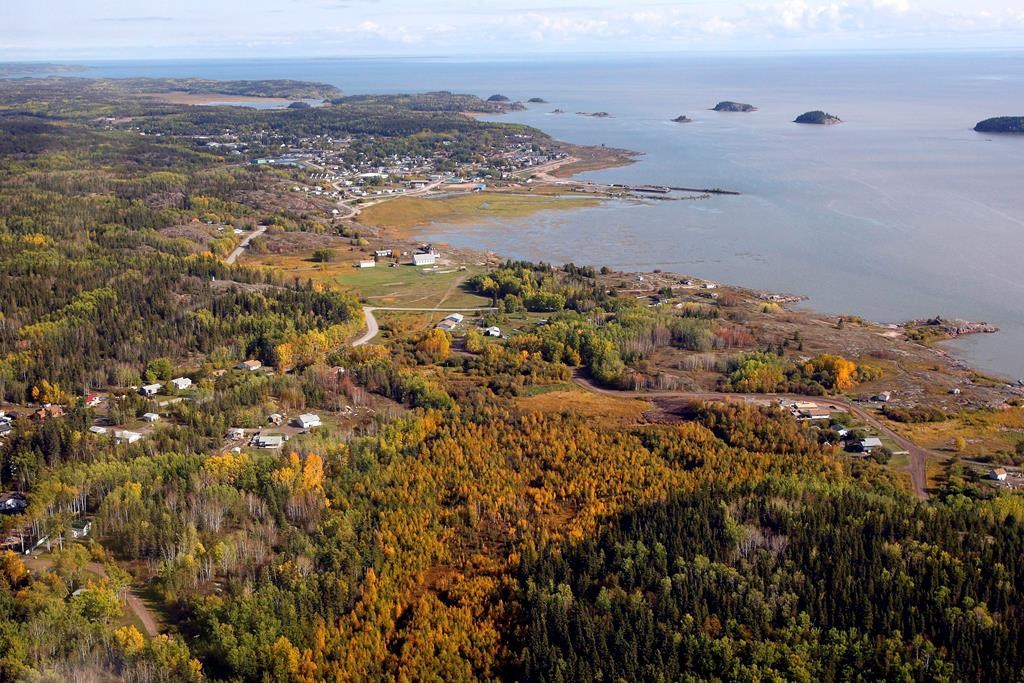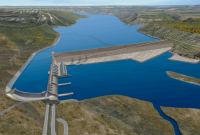Support strong Canadian climate journalism for 2025
One of the world's largest groups of conservation scientists says Canada's biggest national park is among the most threatened World Heritage Sites in North America.
The International Union for the Conservation of Nature says Wood Buffalo National Park, which straddles the Alberta-Northwest Territories boundary, is significantly threatened by hydroelectric and oilsands development.
"This is quite embarrassing," said Melody Lepine of the Mikisew Cree First Nation, many of whose members live alongside the park.
"It's not looking good for Canada avoiding an endangered listing for Wood Buffalo."
Wood Buffalo is a vast stretch of grassland, forest, wetland and lakes. Its 45,000 square kilometres contain one of the world's largest freshwater deltas, uncountable flocks of waterfowl and songbirds, as well as ecological cycles and relationships that remain in their natural state.
It's also the nesting site for the last flock of endangered whooping cranes.
It is considered to have "outstanding and universal value," according to its status as a UNESCO World Heritage Site.
But the nature conservation union, which includes 1,300 member organizations and 10,000 experts, said those values have slipped considerably since the last report in 2014.
Only four other sites in North America are as threatened as Wood Buffalo — three in Mexico and one in the United States. Wood Buffalo is the only North American World Heritage Site to have deteriorated since 2014.
"The big threats are from hydro dam development," said Carolyn Campbell of the Alberta Wilderness Association.
Scientists have long warned about the slow drying of the Peace-Athabasca Delta from the Bennett Dam in British Columbia. BC Hydro's planned Site C dam is expected to worsen those effects.
"There's no water, no birds, no bison, no muskrats," Lepine said. "People are getting stuck on mudflats. They can't navigate. They can't get through to their hunting grounds or sacred sites.
"The loss of the delta is basically a loss of the Mikisew culture."
The report says the park is also threatened by oilsands development upstream on the Athabasca River.
The Frontier oilsands mine proposed by Teck Resources would be the closest to the park yet. Teck has been ordered to consider the effect on the park in its application.
In an emailed statement, Parks Canada said it welcomes the report, but added its focus is too narrow.
"In many cases, the conservation challenges stem from outside the national park boundaries, such as climate change," said the statement.
"(The report) does not take into account future management actions or Parks Canada's specific responsibilities in managing Wood Buffalo National Park in the face of these potential challenges."
The agency said it is committed to securing Wood Buffalo's future as a World Heritage Site.
Campbell said governments need to ensure that the area continues to get the volume of water it needs to sustain itself.
"We need to really look at providing the flows that the Peace-Athabasca needs to stay resilient to climate change," she said.
"We're poorly understanding the cumulative impacts."
It's not the first time Canada has been warned about the future of Wood Buffalo. Last June, UNESCO scientists visited the park at the invitation of the Mikisew.
They found the same concerns listed in the report and warned the park's world heritage status would be endangered unless Canada implemented 17 recommendations.
The group gave Canada until March to come up with a plan and until December to show progress. Parks Canada said it is "working with partners" to come up with an action plan for the park.






Comments
If flooding/drought is a problem, a multi-reservoir system on the Peace River is the cure.
We can have all the power we need, and a better river flow too.
But tarssands toxins? That's a whole lot harder.